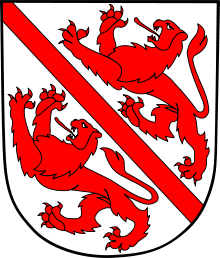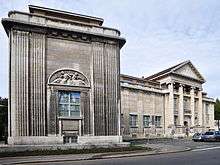Winterthur
| Winterthur | ||
|---|---|---|
 June 2009 view of the old town | ||
| ||
 Winterthur | ||
|
Location of Winterthur 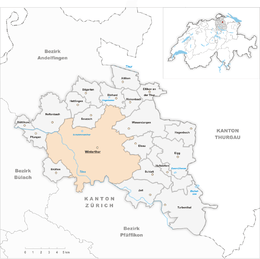 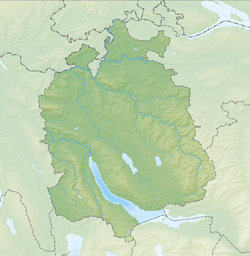 Winterthur Winterthur (Canton of Zürich) | ||
| Coordinates: 47°29′56″N 8°43′43″E / 47.49889°N 8.72861°ECoordinates: 47°29′56″N 8°43′43″E / 47.49889°N 8.72861°E | ||
| Country | Switzerland | |
| Canton | Zürich | |
| District | Winterthur | |
| Government | ||
| • Executive |
Stadtrat with 7 members | |
| • Mayor |
Stadtpräsident (list) Michael Künzle CVP/PDC (as of 2012) | |
| • Parliament |
Grosser Gemeinderat with 60 members | |
| Area[1] | ||
| • Total | 68.07 km2 (26.28 sq mi) | |
| Elevation (Bahnhofplatz) | 439 m (1,440 ft) | |
| Highest elevation (Hulmen) | 687 m (2,254 ft) | |
| Lowest elevation (Kläranlage Hard) | 393 m (1,289 ft) | |
| Population (Dec 2017[2]) | ||
| • Total | 110,912 | |
| • Density | 1,600/km2 (4,200/sq mi) | |
| Demonym(s) | German: Winterthurer(in) | |
| Postal code | 8400, 8404, 8405, 8406, 8408, 8409, 8404 Stadel (Winterthur), 8404 Reutlingen (Winterthur), 8310 Kempthal, 8352 Ricketwil (Winterthur), 8482 Sennhof (Winterthur), 8542 Wiesendangen, 8545 Rickenbach Sulz | |
| SFOS number | 0230 | |
| Localities | Stadt (city), Dättnau, Deutweg, Ganzenbühl, Grüze, Hegi, Heiligberg, Mattenbach, Oberseen, Oberwinterthur, Rosenberg, Schlosstal, Seen, Töss, Veltheim, Wülflingen, Zinzikon | |
| Surrounded by | Brütten, Dinhard, Elsau, Hettlingen, Illnau-Effretikon, Kyburg, Lindau, Neftenbach, Oberembrach, Pfungen, Rickenbach, Schlatt, Seuzach, Wiesendangen, Zell | |
| Twin towns | Hall in Tirol (Austria), La Chaux-de-Fonds (Switzerland), Pilsen (Czech Republic), Yverdon-les-Bains (Switzerland) | |
| Website |
stadt SFSO statistics | |
Winterthur (/ˈvɪntərtʊər/, German pronunciation: [ˈvɪntɐtuːɐ̯]; French: Winterthour) is a city in the canton of Zürich in northern Switzerland. It has the country's sixth-largest population, estimated at over 108,000 people, and the ninth largest agglomeration with about 138,000 inhabitants.[3] Today Winterthur is a service and high-tech industry centre, but many people make use of its proximity to Zürich, which lies approximately 20 kilometres (12 mi) to the southwest, and only 20 minutes by train.
The official language of Winterthur is (the Swiss variety of Standard) German, but the main spoken language is the local variant of the Alemannic Swiss German dialect. In the local dialect and by its inhabitants, Winterthur is usually abbreviated as Winti.
Winterthur is connected to Germany by direct trains and enjoys links to Zürich Airport. It is also a regional transport hub: the A1 motorway from Geneva through to St. Margrethen connects in Winterthur with the A4 motorway heading north toward Schaffhausen and the A7 motorway heading close to the Swiss-German border at Kreuzlingen. There are also roads leading to other places such as Turbenthal. The railway station Bahnhof Winterthur is one of the busiest railway stations in Switzerland.
History
Vitudurum was a vicus in what is now Oberwinterthur during the Roman era (1st century BC to 3rd century AD), fortified into a castrum at the end of the 3rd century, apparently in reaction to the incipient Alamannic invasion.
An Alamannic settlement was present at the site in the 7th century. In a battle near Winterthur in 919, Burchard II of Swabia asserted his control over the Thurgau within the Duchy of Swabia against the claims of Rudolph II of Burgundy.
The counts of Winterthur, a cadet branch of the counts of Bregenz, built Kyburg castle in the 10th century. With the extinction of the counts of Winterthur in 1053, the castle passed to the counts of Dillingen. Winterthur as a city (presumably on the site of a pre-existing village) was founded by Hartmann III of Dillingen in 1180, shortly before his death in the same year. From 1180 to 1263, Winterthur was ruled by the cadet line of the House of Kyburg.
When the counts of Kyburg were in turn extinct in the male line in 1263, Winterthur passed to the House of Habsburg, who established a comital line of Neu-Kyburg in 1264 and granted city rights to Winterthur in the same year.[4] From 1415 until 1442 Winterthur became reichsfrei or subject only to the Holy Roman Emperor. However, in the Old Zürich War they lost this freedom and came back under the control of the Austrian Habsburgs. Needing money, in 1467, the Habsburgs sold Winterthur to the city of Zürich.

In the time under the leadership of Zürich, Winterthur's economic freedom was restricted. It lost many of their market rights and the right to trade in some goods. This ended in 1798, when Napoleonic troops liberated the town. On 27 May 1799, it was the site of the Battle of Winterthur between elements of the French Army of the Danube and the elements of the Habsburg army, commanded by Friedrich, Baron von Hotze during the War of the Second Coalition, in the French Revolutionary Wars. Because Winterthur lies near Zürich and at the junction of seven cross-roads; the army that held the town held the access to most of Switzerland and points crossing the Rhine into southern Germany. Although the forces involved were small, the ability of the Austrians to sustain an 11-hour assault against the French line, on the plateau north of Zürich, resulted in the consolidation of three Austrian forces. This led to the French defeat a few days later.

In the 19th century, Winterthur became an industrial town when companies, like Sulzer, Rieter and SLM, built large industrial plants. Winterthur suffered severely from its investments in and guarantee of loans to the National Railway of Switzerland (a private enterprise). In 1878, Winterthur had to sell its shares in the line, and from 1881 to 1885 it was in great difficulties in the matter of a loan of nine million francs guaranteed in 1874 by the town, together with three others in Aargau, to the enterprise. As the three co-guarantor towns were unable to pay their share, the whole burden fell on Winterthur, which struggled to meet its liabilities, and was helped by large loans from the cantonal and federal governments.[5]
The Great Depression, in the 1930s, hit Winterthur extremely hard. 60% of the total employees in town worked in the machine industry. Jobs became extremely hard to find. However, with the outbreak of World War II, industry grew again in the city.
In 2008, Winterthur reached 100,000 inhabitants in the city.
Geography
Topography
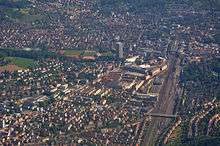
Winterthur is located at an elevation of 439 meters (1,440 ft). The city is located in a basin south and east of the river Töss before it meets the High Rhine after 10 kilometres. The Eulach, a little river, flows from the town's east end through the middle of the town to meet the Töss at the west exit of the city. Because of this the town is colloquially also called "Eulachstadt". Zürich lies about 20 km (12 mi) southwest of Winterthur.
Winterthur has an area of 68.1 km2 (26.3 sq mi). Of this area, 27% is used for agricultural purposes, while 41.4% is forested. Of the rest of the land, 30.8% is settled (buildings or roads) and the remainder (0.8%) is non-productive (rivers, glaciers or mountains).[6] In 1996 housing and buildings made up 21.9% of the total area, while transportation infrastructure made up the rest (9%).[7] Of the total unproductive area, water (streams and lakes) made up 0.6% of the area. As of 2007, 27.6% of the total municipal area was undergoing some type of construction.[7]
Politics
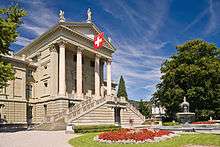
Subdivisions
Winterthur has seven city districts (German: Stadtkreise): 1 - Winterthur-Stadt, 2 - Oberwinterthur, 3 - Seen, 4 - Töss, 5 - Veltheim, 6 - Wülflingen, 7 - Mattenbach
Government
The City Council (Stadtrat) constitutes the executive government of the City of Winterthur and operates as a collegiate authority. It is composed of seven councilors (German: Stadtrat/ Stadträtin), each presiding over a department. Departmental tasks, coordination measures and implementation of laws decreed by the Large Municipal Council are carried by the City Council. In the mandate period 2018–2022 (Legislatur) the City Council is presided by Stadtpräsident Michael Künzle. The regular election of the City Council by any inhabitant valid to vote is held every four years. Any resident of Winterthur allowed to vote can be elected as a member of the City Council. The mayor is elected as such by public election by means of a system of Majorz, while the heads of the other directorates are assigned by the collegiate. The delegates are elected by means of a system of Majorz.[8]
As of 2018, Winterthur's City Council is made up of three representatives of the SP (Social Democratic Party), two members of the FDP (FDP.The Liberals), one of the GPS (Green Party), and one of the CVP (Christian Democratic People's Party, who is also the mayor), giving the left parties a combined four out of seven seats. The last regular election was held on 5 March and 15 April 2018.[9]
| City Councillor (Stadtrat/ Stadträtin) | Party | Head of Department (Depertement, since) of | elected since |
|---|---|---|---|
| Michael Künzle[CC 1] | CVP | Culture and Administration (Kulturelles und Dienste, 2012) | 2012 |
| Yvonne Beutler[CC 2] | SP | Finances (Finanzen, 2012) | 2012 |
| Christa Meier | SP | Civil Engineering and Construction (Bau, 2018) | 2018 |
| Barbara Günthard-Maier | FDP | Security and Environement (Sicherheit und Umwelt, 2012) | 2011 |
| Stefan Fritschi | FDP | Industrial Facilities (Technische Betriebe, 2017) | 2010 |
| Nicolas Galladé | SP | Social Services (Soziales, 2010) | 2010 |
| Jürg Altweg | GPS | Education and Sport (Schule und Sport, 2017) | 2017 |
Ansgar Simon is Town Chancellor (Stadtschreiber) since and Marcel Wendelspiess is Legal Counsel (Rechtskonsulent) since 2013 for the City Council.
Parliament
The Grosse Gemeinderat of Winterthur for the mandate period of 2018-2022
The Large Municipal Council (Grosser Gemeinderat) holds legislative power. It is made up of 60 members, with elections held every four years. The Large Municipal Council decrees regulations and by-laws that are executed by the City Council and the administration. The delegates are selected by means of a system of proportional representation (Proporz).
The sessions of the Large Municipal Council are public. Unlike members of the City Council, members of the Large Municipal Council are not politicians by profession, and they are paid a fee based on their attendance. Any resident of Winterthur allowed to vote can be elected as a member of the Large Municipal Council. The parliament holds its meetings in the Rathaus once a month on Mondays.[10]
The last regular election of the Large Municipal Council was held on 8 March 2018 for the mandate period (German: Legislatur) from May 2018 to April 2022. Currently the Large Municipal Council consists of 18 members of the Social Democratic Party (SP/PS), 10 Swiss People's Party (SVP/UDC), 8 The Liberals (FDP/PLR), 7 Green Liberal Party (GLP/PVL), 5 Green Party (GPS/PES), 4 Evangelical People's Party (EVP), 3 Christian Democratic People's Party (CVP/PDC), 2 Alternative List (AL), one representative each of the Alternative List (AL), Conservative Democratic Party (BDP/PBD), Federal Democratic Union (EDU/UDF), and the Pirate Party.[9]
National Elections
National Council
In the 2015 election for the Swiss National Council the most popular party was the SPS which received 26.1% of the vote. The next most popular parties were the SVP (23.4%), the FDP (12.1%), the Greens (8.8%), the GLP (8.8%), the EVP (5.0%), the CVP (4.0%), and BDP (3.5%). In the federal election, a total of 33,426 voters were cast, and the voter turnout was 49.3%.[11]
In the 2011, federal election the most popular party was the SP which received 22.5% of the vote. The next three most popular parties were the SVP (21.8%), the Green Liberals (11.1%) and the Green Party (10.1%).
International relations
Twin towns – sister cities
Winterthur is twinned with two Swiss and two international towns and coordinates its international relations together with the Swiss towns Frauenfeld, St. Gallen, and Schaffhausen:[12]
Namesake
The community of Winterthur in Delaware, USA, is named after the city.
Demographics
| Significant minority groups | |
| Nationality | Population (2015)[14] |
|---|---|
| 4,942 | |
| 4,577 | |
| 2,032 | |
| 1,849 | |
| 1,439 | |
| 1,285 | |
| 1,049 | |
As of July 2008 the population of Winterthur is 100,000.[15] More recently (as of 31 December 2017) the population was 110,912.[2] As of 2007 23.6% of the population was made up of foreign nationals.[16] As of 2008 the gender distribution of the population was 48.6% male and 51.4% female. Over the last 10 years the population has grown at a rate of 10.4%. Most of the population (as of 2000) speaks German (83.0%), with Italian being second most common (4.9%) and Albanian being third (2.0%).
The age distribution of the population (as of 2000) is children and teenagers (0–19 years old) make up 20.9% of the population, while adults (20–64 years old) make up 62.6% and seniors (over 64 years old) make up 16.5%.[6] There are 42028 households in Winterthur.[7]
As of 2008 there were 37,327 members of the Swiss Reformed Church (37.1% of the population) and 26,995 Catholics (26.7% of the population) in Winterthur. Of the other Christian faiths, 326 (0.3%) were Lutheran, 203 (0.2%) were Christian Catholic, 3141 (3.1%) are some type of Christian Orthodox and 3,132 (3.1%) are another Christian faith. Of the rest of the population, 11,608 (11.5%) were Muslim, 108 (0.1%) were Jewish, 1,359 (1.3%) belonged to another non-Christian faith and 16,779 (16.6%) were atheist or agnostic or did not belong to any organized faith.[16]
Economy
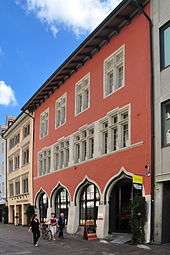
Economically, Winterthur was one of the homes of Switzerland's rail industry and an industrial centre. The rail industry and other heavy industry have largely disappeared. Amongst the most significant companies was Sulzer Brothers, today's Sulzer Ltd., Sulzer AG, commonly abbreviated to Sulzer. Textile production declined even earlier on. Also the Rieter company comes from Winterthur.
Switzerland's largest bank, and one of the world's large banks, Union Bank of Switzerland (UBS), since 1998 UBS AG, was also founded in Winterthur.
The Landbote newspaper is situated in Winterthur, and also serves as Winterthurer Stadtanzeiger, the official publication organ of the city of Winterthur.
Peraves, the manufacturer of the fully enclosed "cabin motorcycle" named the Monotracer, predated by an earlier model named the Ecomobile, has been manufacturing the unusual vehicles since the early 1980s. In 2010, Peraves won the Progressive Insurance Automotive X-Prize with an electric powered version of the Monotracer.
Among other commercial organizations, Winterthur was home to Switzerland's largest insurance business "Winterthur Insurance". Until 2006, the company was the largest in Switzerland and was in Europe's top 10. On 1 January 2007 the Winterthur company was officially acquired by the French AXA group and is now known as AXA Winterthur.
Winterthur has an unemployment rate of 3.13%. As of 2005, there were 594 people employed in the primary economic sector and about 97 businesses involved in this sector; 11603 people are employed in the secondary sector and there are 717 businesses in this sector; 39982 people are employed in the tertiary sector, with 3570 businesses in this sector.[6] As of 2007 47.9% of the working population were employed full-time, and 52.1% were employed part-time.[7] Note that in Switzerland "part-time" refers to anything less than full-time, for example 80% of working hours.
Education
In Winterthur, about 70.7% of the population (between ages 25 and 64) have completed either non-mandatory upper secondary education or additional higher education (either university or a Fachhochschule).[6]
The town is renowned for its institute of higher education Technikum, which is the largest school of technology in Switzerland. The institute has recently teamed up with schools from Zürich and is now known as Zürcher Hochschule für Angewandte Wissenschaften (ZHAW).
The headquarters of the Club Of Rome are located in Winterthur.
SIS Swiss International School maintains a campus in Winterthur. International School Winterthur, formerly located in Winterthur, closed in 2015.
Transport

Bahnhof Winterthur, the central station, is one of the busiest stations on the Swiss Railway Network with 105,000 passengers a day. As the town is close to Zürich, it is served by many trains on the local Zürich S-Bahn network. EuroCity services to Munich and regional trains to St. Gallen, Konstanz or Romanshorn also serve the station. As well as the Hauptbahnhof, there are nine more stations within the city, called Oberwinterthur, Seen, Grüze, Töss, Hegi, Reutlingen, Wülflingen, Wallrüti and Sennhof-Kyburg.
The local public transport is run by STADTBUS Winterthur with twelve town bus lines, including the Winterthur trolleybus system, and five regional bus lines.
Tourism
Winterthur is not high on the list of tourist destinations in Switzerland. As a result, it does not offer a wide range of hotels to choose from. As it is relatively easy to reach from Zürich by public transport, tourists who do visit Winterthur, often stay in Zürich.
Nevertheless, Winterthur is mentioned in most tourist guides for its numerous museums, many of which offer world class art, among them of the Gottfried Keller Stiftung. The most famous are:
- Oskar Reinhart Collection 'Am Römerholz'
- Oskar Reinhart Collection am Stadtgarten
- Kunstmuseum Winterthur
- Villa Flora
- Fotomuseum Winterthur
- Swiss Science Center Technorama
 Technorama |
Culture
Music
Winterthur's chamber orchestra Orchester Musikkollegium Winterthur is the oldest orchestra in Switzerland, and also plays at the Zürich Opera. Between 1922 and 1950, the philanthropist Werner Reinhart and the conductor Hermann Scherchen played a leading role in shaping the musical life of Winterthur, with numerous premiere performances emphasizing contemporary music.[17]
The city hall Stadthaus, in which the concerts of the Musikkollegium take place, was built by Gottfried Semper.
Musikfestwochen, in late August and early September, sees Winterthur’s Old Town taken over for live music of all kinds, in the street and bars as well as in concert venues.

The "Albanifest", the largest annual festival in a historic town in Switzerland, is named after St Alban, one of the city's four saints, is held here, over three days in late June every year. Although a recent creation, the festival celebrates the granting of a charter to the town in 1264 by Rudolf of Habsburg on 22 June of that year, which happened to be the saint's day.
The church of St. Laurenz in the city centre dates from 1264, the town hall was built in 1781, the assembly hall in 1865.
In 1989, Winterthur received the Wakker Prize for the development and preservation of its architectural heritage.
The Swiss folk metal band Eluveitie was formed in Winterthur and the Punkabilly band The Peacocks comes from here.
Arts
Open Doors
Open Doors is an artist supported platform for artists with art studios in Winterthur, Switzerland. The platform was established to bridge arts and the community as well as provide the artists with means to independently promote their art in any way they choose. Open Doors takes place annually during the last weekend of September. Participating artists open their studios to the public and present their art to the public. Oftentimes it is possible to view the artists while they are working. Among the approximate 60 artists who participate there are local, international, autodidacts and art academy graduates. Open Doors Winterthur was founded in 2008 by San Francisco born artist Michelle Bird and resident of Winterthur. Open Doors Winterthur publishes the annual MAP Magazine Artist Professionals which is available on line and in print form. MAP Magazine features articles about local art initiatives and profiles local artists and their art studios. The event is supported by a map that indicates the location of each artist’s studio on a map.
Sport
EHC Winterthur is the city's main hockey team which currently plays in the Swiss League (SL), the second-highest ice hockey league in Switzerland. Their arena is the 3,000-seat Deutweg Arena.
FC Winterthur are the city's football club and currently play in the Swiss Challenge League. They play at the Stadion Schützenwiese.
In April 2011, the 2011 IIHF Women's World Championship top division were held at Deutweg rink and at Hallenstadion ice rink hockey arena (in Zürich).
Notable people
A selection
- Henrik Haggenmacher (1827–1917), Swiss-born Hungarian industrialist, business magnate, philanthropist and investor
- Marlies Bänziger (born 1960), Swiss politician
- Willy Bretscher (1897–1992), newspaper writer and editor
- Martin Buser (born 1958), Swiss dog musher, 4-time Iditarod champion
- Chantal Galladé (born 1972), Swiss politician
- Viktor Giacobbo (born 1952), Swiss writer, comedian and actor
- Mirco Müller (born 1995), Swiss ice hockey player, currently playing for the New Jersey Devils
- Sigmund Widmer (1919–2003), Swiss politician, historian and writer, University of Zürich faculty
- Joan Gamper (1877–1930), Swiss football pioneer, versatile athlete and club president.
Sons and daughters of the town
1800–1850
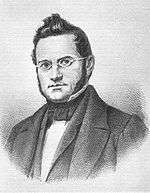
- Jonas Furrer (1805–1861), politician, first Federal President of Switzerland
- David Eduard Steiner (1811–1860), painter, eraser and lithographer
- Konrad Grob (1828–1904), lithographer and painter
1851–1900
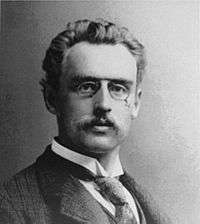
- Charles E. L. Brown (1863–1924), machine designer, co-founder (Brown, Boveri & Cie)
- Heinrich Wölfflin (1864–1945), art historian
- Alfred Ernst (1875–1968), botanist
- Hans Gamper (1877–1930), sportsman and founder of FC Barcelona
- Ernst Wetter (1877–1963), politician
- Alfred Büchi (1879–1959), inventor of the exhaust gas turbocharger
- Albert Thellung (1881–1928), botanist
- Werner Reinhart (1884–1951), industrialist and patron
- Oskar Reinhart (1885–1965), art collectors and patrons
- Emil Brunner (1889–1966), a reformed theologian
- Jakob Flach (1894–1982), writer, puppeteer and painter
- Willy Bretscher (1897–1992), journalist
1901–1950
- Georges Miez (1904–1999), gymnast
- Willy Hess (composer) (1906–1997), musicologist and composer
- Albert Büchi (1907–1988), cyclist
- Max Bill (1908–1994), architect, artist and designer
- Warja Lavater (1913–2007), graphic artist and illustrator
- Werner Weber (1919–2005), literary critic, writer and translator
- Rudolf Friedrich (1923–2013), lawyer and politician
- Walter Gross (1924–1999), lyric poet
- Peter Frei (1925–2010), ancient historian
- Georg Gerster (born 1928), journalist, pioneer of flight photography
- Bruno Hunziker (1930–2000), politician, parliamentarian and economic attorney
- Richard R. Ernst (born 1933), chemist (Nobel Prize Laureate 1991)
- Ursula Bagdasarjanz (born 1934), violinist
- Hannes Keller (born 1934), computer pioneer, entrepreneur, diving pioneer and amateur pianist
- Niklaus Wirth (born 1934), computer scientist
- Oscar Fritschi (1939–2016), politician
- Michael Gempart (born 1941), actor
- Markus Imhoof (born 1941), film director and screenwriter
- Hans-Ulrich Brunner (1943–2006), painter
- Beat Raaflaub (born 1946), conductor
- Jürg Amann (1947–2013), writer
References
- ↑ Arealstatistik Standard - Gemeindedaten nach 4 Hauptbereichen
- 1 2 Swiss Federal Statistical Office - STAT-TAB, online database – Ständige und nichtständige Wohnbevölkerung nach institutionellen Gliederungen, Geburtsort und Staatsangehörigkeit (in German) accessed 17 September 2018
- ↑ "Städtische Bevölkerung: Agglomerationen und isolierte Städte" (in German and French). Neuchâtel, Switzerland: Swiss Federal Statistical Office. 26 August 2016. Retrieved 14 December 2016.
- ↑ Ernst Theodor Gaupp: Deutsche Stadtrechte im Mittelalter, mit rechtsgeschichtlichen Erläuterungen. Erster Band: Die Stadtrechte von Straßburg, Hagenau, Molsheim, Colmar, Annweiler, Winterthur, Landshut in Bayern, Regensburg, Nürnberg, Eger, Eisenach und Altenburg. Breslau 1851, S. 129–147, online (in German)
- ↑

- 1 2 3 4 Swiss Federal Statistical Office Retrieved 14 Aug 2009
- 1 2 3 4 Statistics Zürich (in German) Retrieved 4 August 2009
- ↑ "Stadtrat" (official site) (in German). Winterthur, Switzerland: Stadt Winterthur. 30 May 2018. Retrieved 2018-06-30.
- 1 2 3 "Erneuerungswahl des Grossen Gemeinderates" (official site) (in German). Winterthur, Switzerland: Stadt Winterthur. Retrieved 2018-06-30.
- ↑ "Grosser Gemeinderat Winterthur" (official site) (in German). Winterthur, Switzerland: Grosser Gemeinderat Winterthur. Retrieved 2018-06-30.
- ↑ "Nationalratswahlen 2015: Stärke der Parteien und Wahlbeteiligung nach Gemeinden" (XLS) (official statistics) (in German and French). Neuchâtel, Switzerland: Swiss Federal Statistical Office. 9 March 2016. Retrieved 2018-06-30.
- ↑ "Partnerstädte" (official site) (in German). Winterthur, Switzerland: Stadt Winterthur. 2016. Retrieved 2016-09-30.
- ↑ "Association Suisse des Communes et Régions d'Europe". L'Association suisse pour le Conseil des Communes et Régions d'Europe (ASCCRE) (in French). Archived from the original on 24 July 2012. Retrieved 20 July 2013.
- ↑ Federal Statistical Office – Ständige und nichtständige Wohnbevölkerung nach institutionellen Gliederungen, Geburtsort und Staatsangehörigkeit (Land) accessed 31 October 2016
- ↑ Neue Zürcher Zeitung 4 July 2008 edition (in German) Retrieved 14 August 2009
- 1 2 Winterthur In Zahlen 2009 (in German) Retrieved 8 December 2009
- ↑ Musikkollegium website Archived 29 May 2007 at the Wayback Machine.
External links
| Wikimedia Commons has media related to Winterthur. |
- Official Webpage of Winterthur
- Official Webpage Economic Development Region of Winterthur
- Tourismusbüro Winterthur
- Musikkollegium Winterthur
- Homepage of Winterthur's city Orchestra
- Official Webpage Open Doors
